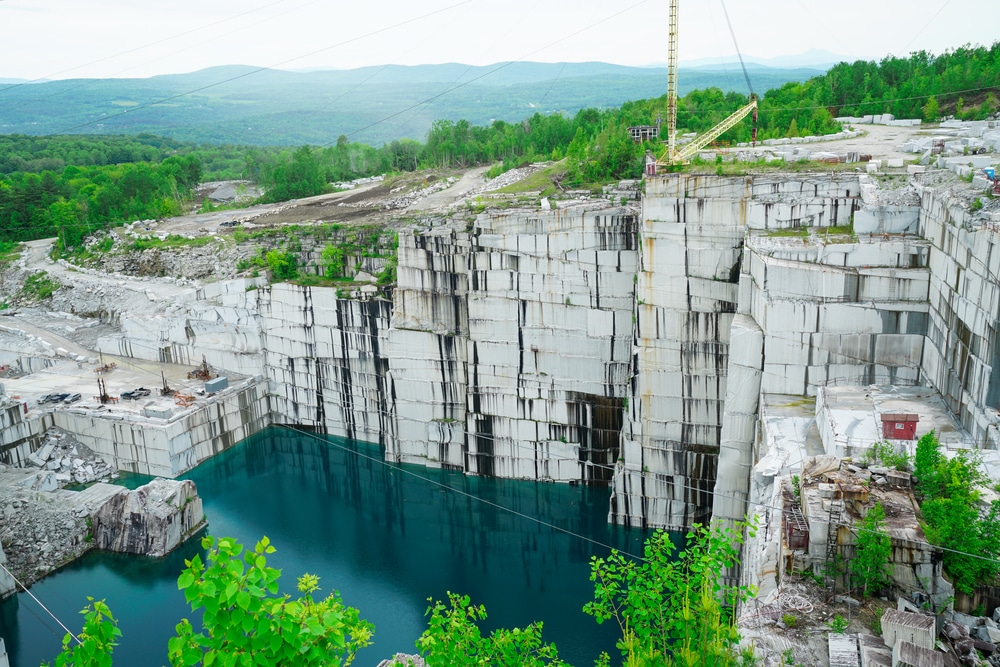The Covert Treasures: Checking Out Granite Quarries in South Africa
The Covert Treasures: Checking Out Granite Quarries in South Africa
Blog Article
Unearthing the Rich Background and Lasting Practices of Granite Quarrying
As we base on the precipice of discovering the elaborate tapestry of granite quarrying, a trip through time reveals not simply the physical act of extracting stone yet also the social and historical relevance woven into the very textile of this technique. From the ancient beginnings that laid the structure for modern quarrying strategies to the sustainable techniques that are forming the future of this industry, each chisel mark on granite surface areas tells a story waiting to be uncovered (granite quarries in south africa). The legacy of granite quarrying stretches far beyond mere extraction; it is a testimony to human ingenuity, resilience, and the enduring attraction of this majestic rock
Old Origins of Granite Quarrying
Dating back to old human beings, the method of quarrying granite has actually been an important part of human background and architectural advancement. The earliest evidence of granite quarrying go back to old Egypt, where enormous pyramids and detailed sculptures were crafted from this resilient stone. The Egyptians utilized primitive devices to draw out granite blocks from quarries, showcasing the value of this material in their significant buildings.
Relocating ahead in history, the Greeks likewise made significant payments to the quarrying of granite. The Greeks made use of granite in numerous architectural wonders, such as holy places and statues, demonstrating their ability in shaping and carving this durable rock. The Romans further fine-tuned the methods of quarrying granite, employing innovative devices like chisels and hammers to remove and form granite for their famous frameworks.
Through the centuries, the practice of quarrying granite has actually advanced, with modern-day innovations enhancing effectiveness while preserving the timeless charm of this natural stone - granite quarries in south africa. From old worlds to modern home builders, the tradition of granite quarrying continues to shape our world
Advancement of Quarrying Methods
The advancement of quarrying strategies has been marked by a continuous development towards greater effectiveness and accuracy in extracting granite. Early quarrying methods included manual labor with basic devices such as chisels, hammers, and wedges to draw out granite blocks from the planet.
In more recent times, the advent of equipment transformed the quarrying sector, allowing quicker extraction rates and increased efficiency. Technologies such as ruby cable saws, high-pressure water jets, and pneumatic drills have actually become typical in modern quarries, permitting precise cutting and lowered waste. Additionally, improvements in computer-controlled tools and 3D modeling have actually optimized quarrying operations, causing very little environmental effect and boosted sustainability techniques. As the need for granite continues to rise, the advancement of quarrying strategies continues to be important to meeting industry requires successfully and sustainably.
Social Relevance of Granite
Granite holds an extensive cultural importance across numerous human beings because of its enduring presence in building work of arts and respected monuments. From the marvelous pyramids of Egypt to the elaborate makings of the Angkor Wat temple in Cambodia, granite has been a product of option for expressing grandeur and longevity in cultural heritage. In old Rome, granite columns embellished holy places and public structures, symbolizing strength and permanence. The cultural value of granite extends beyond its physical characteristics; it personifies durability, security, and timelessness, making it a sign of sustaining heritages and customs.

Sustainable Practices in Quarrying
Amidst the rich history of granite quarrying and its cultural significance exists an expanding emphasis on lasting techniques within see this page the market. As environmental understanding and concerns about source exhaustion have heightened internationally, the quarrying sector has progressively embraced sustainable approaches to reduce its impact on the atmosphere and surrounding neighborhoods.

Furthermore, reclamation and recovery of quarry sites post-extraction are essential to lasting methods. By recovering quarried areas to a natural or beneficial state, such as producing wildlife habitats or leisure areas, quarriers can counter the environmental impact of their procedures and add useful content favorably to the local ecological community.
Heritage of Granite Quarrying
With a historical background steeped in workmanship and industrial progression, what enduring influence has granite quarrying left on the landscape of modern-day society? The legacy of granite quarrying transcends simple removal practices; it has shaped architectural marvels, metropolitan landscapes, and cultural heritage worldwide. The sturdy nature of granite has made it a favored selection for monuments, structures, and framework, standing as a testament to the ability and artistry of quarry employees across generations.
In addition, the economic impact of granite quarrying can not be neglected. The market proceeds to supply work opportunities and drive local economic situations in areas where granite extraction is common. It has also spurred technological advancements in quarrying techniques and tools, bring about a lot more effective and sustainable practices.
In regards to sustainability, the legacy of granite quarrying includes efforts to alleviate environmental impacts with recovery projects and accountable source monitoring. By stabilizing economic rate of interests with ecological stewardship, the sector aims to make certain that future generations can remain to profit from this long-lasting all-natural source.
Conclusion

Report this page